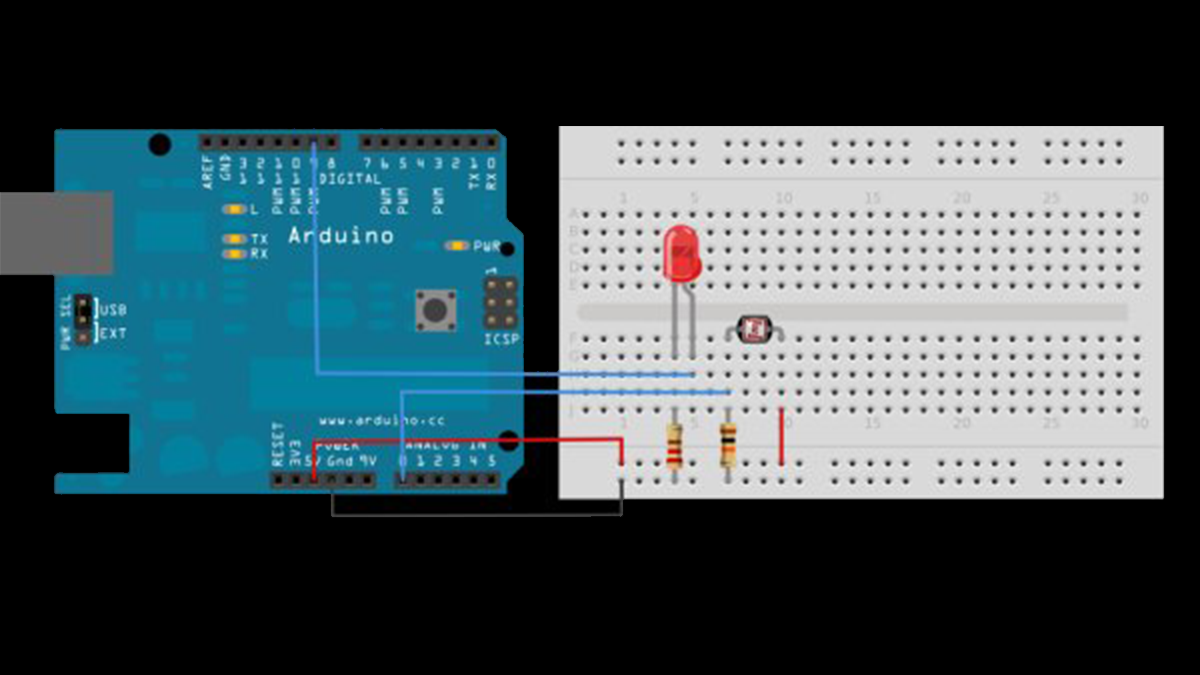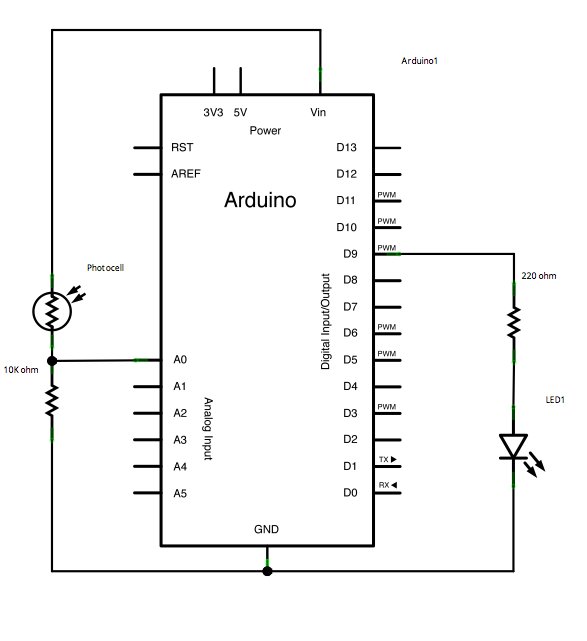This example demonstrates one techinque for calibrating sensor input. The Arduino takes sensor readings for five seconds during the startup, and tracks the highest and lowest values it gets. These sensor readings during the first five seconds of the sketch execution define the minimum and maximum of expected values for the readings taken during the loop.
Circuit
Analog sensor (e.g. potentiometer, light sensor) on analog input 2. LED on digital pin 9.
image developed using Fritzing. For more circuit examples, see the Fritzing project page
Connect an LED to digital pin 9 with a 220 ohm current limiting resistor. Connect a photocell to 5V and then to analog pin 0 with a 10K ohm resistor as a reference to ground.
Schematic
Code
Before the setup, you set initial values for the minimum and maximum like so:
int sensorMax = 0; // maximum sensor value
These may seem backwards. Initially, you set the minimum high and read for anything lower than that, saving it as the new minimum. Likewise, you set the maximum low and read for anything higher as the new maximum, like so:
[box color=”#985D00″ bg=”#FFF8CB” font=”verdana” fontsize=”14 ” radius=”20 ” border=”#985D12″ float=”right” head=”Major Components in Project” headbg=”#FFEB70″ headcolor=”#985D00″]
Hardware Required
- Arduino board
- (1) LED
- (1) analog sensor (a photocell will do)
- (1) 10K ohm resistor
- (1) 220 ohm resistor
- breadboard
- hook-up wire
[/box]
For more detail: Calibrating sensor input using Arduino


